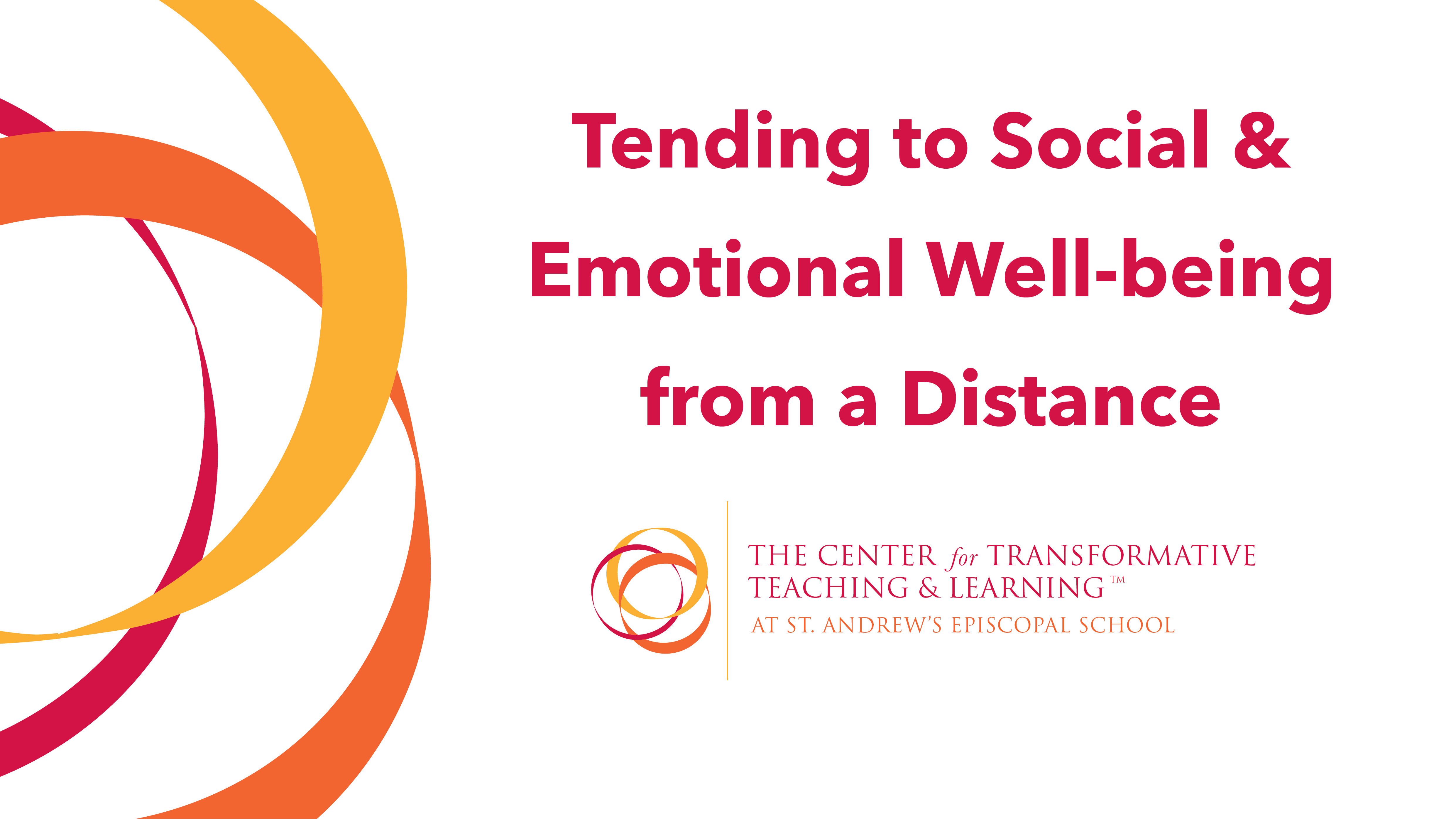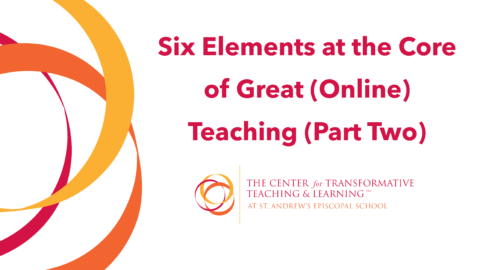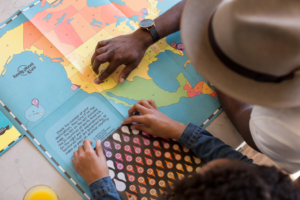By Eva Shultis
After years of encouraging my students to reframe stressful assessments and performances as a “challenge,” rather than a threat, it suddenly feels like my turn to practice what I preach. I know that cognitive appraisal and reframing are powerful tools to modulate the stress we feel in difficult situations, so I’m trying to see the turmoil and tragedy of COVID-19 as a spotlight illuminating areas in which we can grow. I’m wondering: how can we come out of this stronger than we were before – personally, relationally, pedagogically, and systemically? Where do we have the opportunity to live into our core values as individuals, families, educators, and a society? As we physically distance ourselves for the collective good, we’re connected by that shared state, and the “we” who are all in this together is the largest “we” I’ve ever palpably experienced.
Here are five ways educators can tend to social and emotional wellbeing from a distance – for ourselves, our colleagues, and our students.
1. Start with yourself
Sometimes we need a reminder (or a mandate)! Taking time to center ourselves will enable us to be more present and caring for others. The Yale Center for Emotional Intelligence agrees, and has tips for managing our own anxiety around COVID-19 so we can best serve students.
As we reconfigure our schedules for distance learning, we have an opportunity to establish practices that will sustain us for the long haul: getting more sleep, moving our bodies, and safeguarding time for reflection, creativity, and fun! Here is a list of portable self-care practices from the Teaching Channel with links to additional excellent resources.
This is also a teachable moment on a grand scale – we all want our students to be emotionally skillful and resilient, and we can do important modeling now. Wouldn’t our students be curious what we’re doing for fun, or benefit from hearing how we calm down when we feel stressed? If we practice regulating our own emotions (and other Social Emotional Learning skills), we can model this for students when difficult moments arise.
Once we’ve taken care of ourselves, this is an incredible time to connect and build community with other educators – in our own institutions and beyond! We’re part of a worldwide experiment with distance learning, and the mutual support and idea exchange it’s already produced is truly inspiring. Organizations like OneSchoolhouse and Global Online Academy are offering online courses, discussion forums and virtual meetup spaces as we explore and grow together. It’s exciting to imagine how global pedagogy can become better through this experience.
2. Check in: with classes, individuals, and families
Moments of crisis can exacerbate existing inequities on many levels, and closing schools brought issues of access and resources to the forefront. We are grateful if all our students are healthy, sheltered, well-fed and online. Beyond that, we need to accommodate the widest range of experiences they may ever have: students with a single parent/guardian (in industries that were laid off, or industries where employees continue to work at high personal risk), younger siblings to care for, multiple households they typically move between, vulnerable family members, their own pre-existing health conditions or anxiety, ADHD, and other learning differences. These students will all face increased challenges now, so we need to check in.
- With the whole class: Creativity is key here! The Blob Tree is a CTTL favorite – though students will tire of it if they see it everywhere. What other versions can we invent? These creative Pulse Meter ideas from National Educators for Restorative Practices are a good place to start. The Yale Center for Emotional Intelligence has a paid Mood Meter app – we can also make our own with an online form or ask students to plot themselves on an interactive whiteboard. Tools like the Atlas of Emotions can offer students language for how they’re feeling.
- With individual students: Make check-ins both required and optional. We can schedule brief one-on-one check-ins and offer additional times students can sign up for as desired.
- With families and caregivers: This a more important partnership than ever. Families and caregivers can update us about events at home that students may not share. They can also observe student behaviors we can’t, such as these reactions outlined by the National Child Traumatic Stress Network on pages 4-5.
Once we’ve checked in, what do we do with this information? We can use our expertise to shift the balance between seriousness and fun, the COVID-19 situation, and regularly scheduled programming. We can follow up with a student or family, and if a student might benefit from counseling, direct them to school-provided services (or if school counselors are stretched thin, online services like Talkspace for Teens offer free trials and discounted plans for students aged 13-17).
To avoid cognitive overload, we’ll dig into the next three ideas in a future installment – but here is a preview:
3. Mind the balance of COVID-19 and other content
This is important to keep an eye on in both our curricular choices and our regular check-ins. We should do what feels organic to our subjects, appropriate for our grade levels, authentic to us as individuals, and right in each moment – and try to be aware of what our grade-level colleagues are doing, too.
4. Intentionally build moments of fun and connection
This can get lost if we don’t prioritize it, and there has to be something fun about virtual school! Much of online learning is teacher-mediated, by default – what avenues can we create for our students to strengthen their connections with each other?
5. Help students find new depths within themselves
At best, this period of challenge offers an unprecedented opportunity for our students to develop resilience, practice empathy, connect with each other and pursue individual passions and creative projects. What space can we create for this, within our spheres of influence?
Until next time – take care of yourselves, take care of each other, and be well.
Eva Shultis is the Associate Director for Program Development & Research for the CTTL. Eva contributes to the research and development of Neuroteach Global, facilitates workshops for teachers and school leaders, and coordinates the Science of Teaching and School Leadership Academy. She also teaches and advises 7th graders at St. Andrew’s Episcopal School (though Biology and Psychology equally hold a special place in her heart). Eva has taught middle and high school science since 2010, interspersed with work on problem-based learning at the New England Board of Higher Education and research on causal understanding at Project Zero. She cares deeply about the intersection of cognitive science and equity work. Eva earned her Sc.B. in Human Biology from Brown University and an Ed.M. in Mind, Brain & Education from the Harvard Graduate School of Education.




